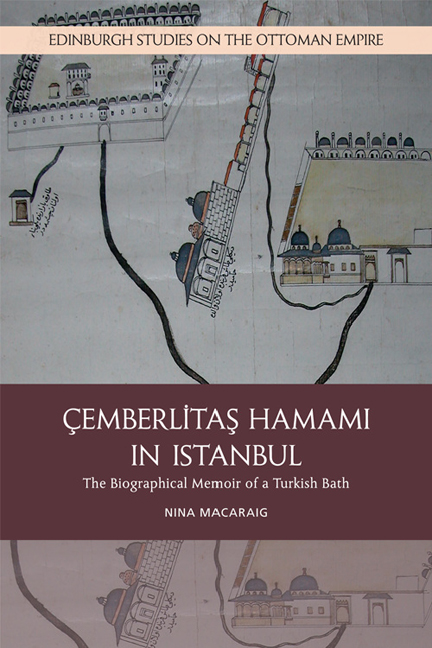Book contents
- Frontmatter
- Contents
- List of Tables
- List of Figures
- Preface
- Acknowledgements
- Note on Transliteration
- Introduction
- 1 Ancestry
- 2 Family
- 3 From Birth to Breadwinner
- 4 Impressions and Identity
- 5 In Sickness and in Health
- 6 Old Age
- 7 Second Spring
- Epilogue
- Appendix: Endowment Deed of the Atik Valide Vakfı (VGM, D. 1766)
- Notes
- References
- Index
3 - From Birth to Breadwinner
Published online by Cambridge University Press: 28 April 2021
- Frontmatter
- Contents
- List of Tables
- List of Figures
- Preface
- Acknowledgements
- Note on Transliteration
- Introduction
- 1 Ancestry
- 2 Family
- 3 From Birth to Breadwinner
- 4 Impressions and Identity
- 5 In Sickness and in Health
- 6 Old Age
- 7 Second Spring
- Epilogue
- Appendix: Endowment Deed of the Atik Valide Vakfı (VGM, D. 1766)
- Notes
- References
- Index
Summary
It describes how the aforementioned hamam appeared when it was first erected and before it lived through the vicissitudes of fires and earthquakes and the addition of ignoble lean-to buildings to its attractive front. And then it describes how this humble servant, this poor one, determined the very exact date of construction of the aforementioned hamam, with the help of the many orders that the servants to the Sublime Porte and their descendants kept for posterity. It describes how this pleasurable hamam, after its completion, began to take up work and how it was readied – with water and wood – to render its joy-giving service to the people of the Protected City. And it describes the people who expended all their zeal humanly possible on making this bathhouse a most pleasurable one – the hamamcı, the attendants, the furnace stoker – and how these people come together in guilds. And then, who the people visiting the hamam and, by paying their akçes for the most excellent services given there, contributing to the valide sultan's charitable foundation were. And it describes how the aforementioned hamam worked hard, together with its siblings, in order to support the valide sultan's noble Friday Mosque and its dependencies in Üsküdar, and in detail how much money it earned in this quest.
The Birth
At birth, Çemberlitaş Hamamı presented an appearance very different from the one visitors experience today. During Byzantine times, the Forum of Constantine occupied the area, its centre marked by a porphyry column with a statue of Constantine the Great as Apollo Helios. The column had been erected in 330 to commemorate the dedication of Constantinople as the new capital of the Roman Empire. Through the forum ran the mese, the major road leading from the Hippodrome to the main gate in the city wall. The Ottomans subsequently continued to use large portions of this road, which in the eighteenth century came to be officially called Divan Yolu, as a major traffic artery and processional route and turned the forum into a market space and land for a new mosque complex (Figures 3.1, 3.2).
In 1496/7, the vizier Atik Ali Paşa – who would later go on to serve as grand vizier to Sultan Bayezid II twice, from 1501 to 1503 and from 1506 to 1511 – celebrated the completion of his mosque, medrese, hospice and dervish convent on a plot just northwest of the column.
- Type
- Chapter
- Information
- Cemberlitas Hamami in IstanbulThe Biographical Memoir of a Turkish Bath, pp. 73 - 115Publisher: Edinburgh University PressPrint publication year: 2018

